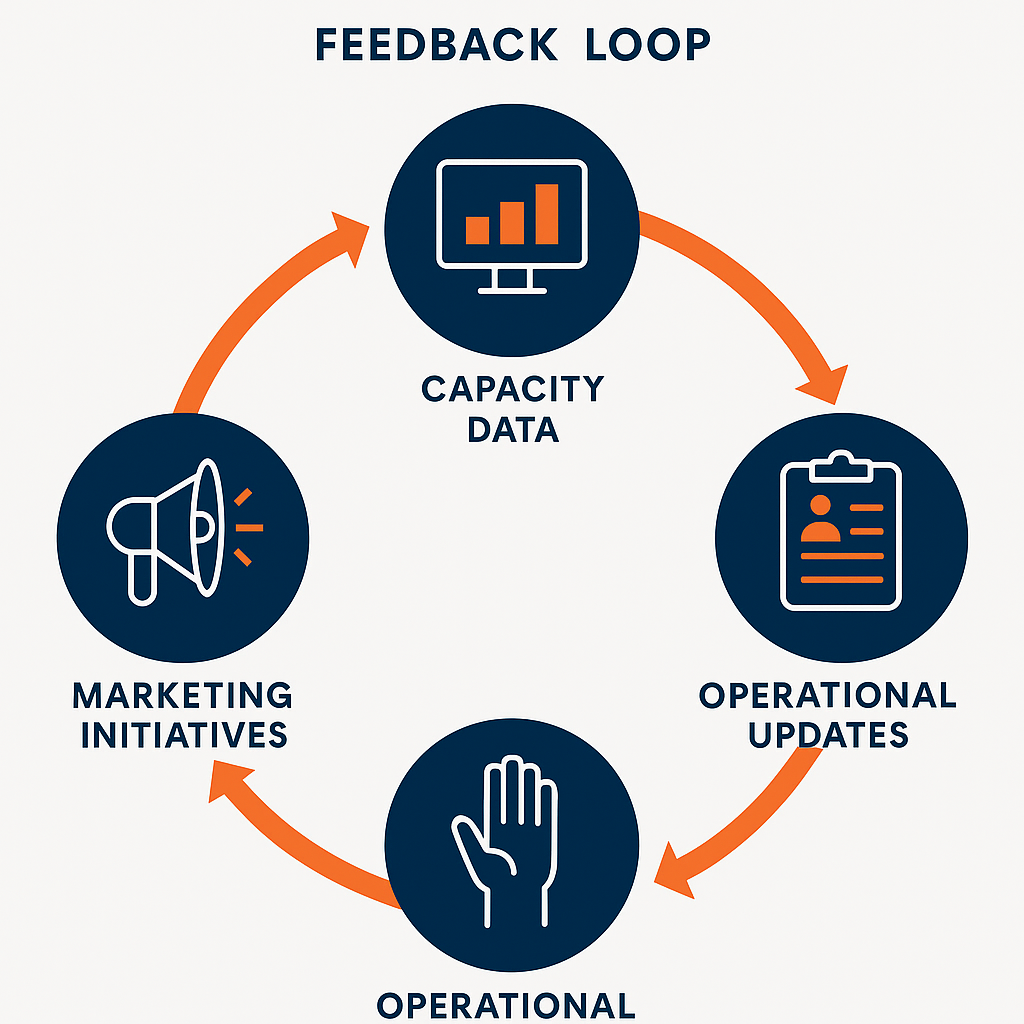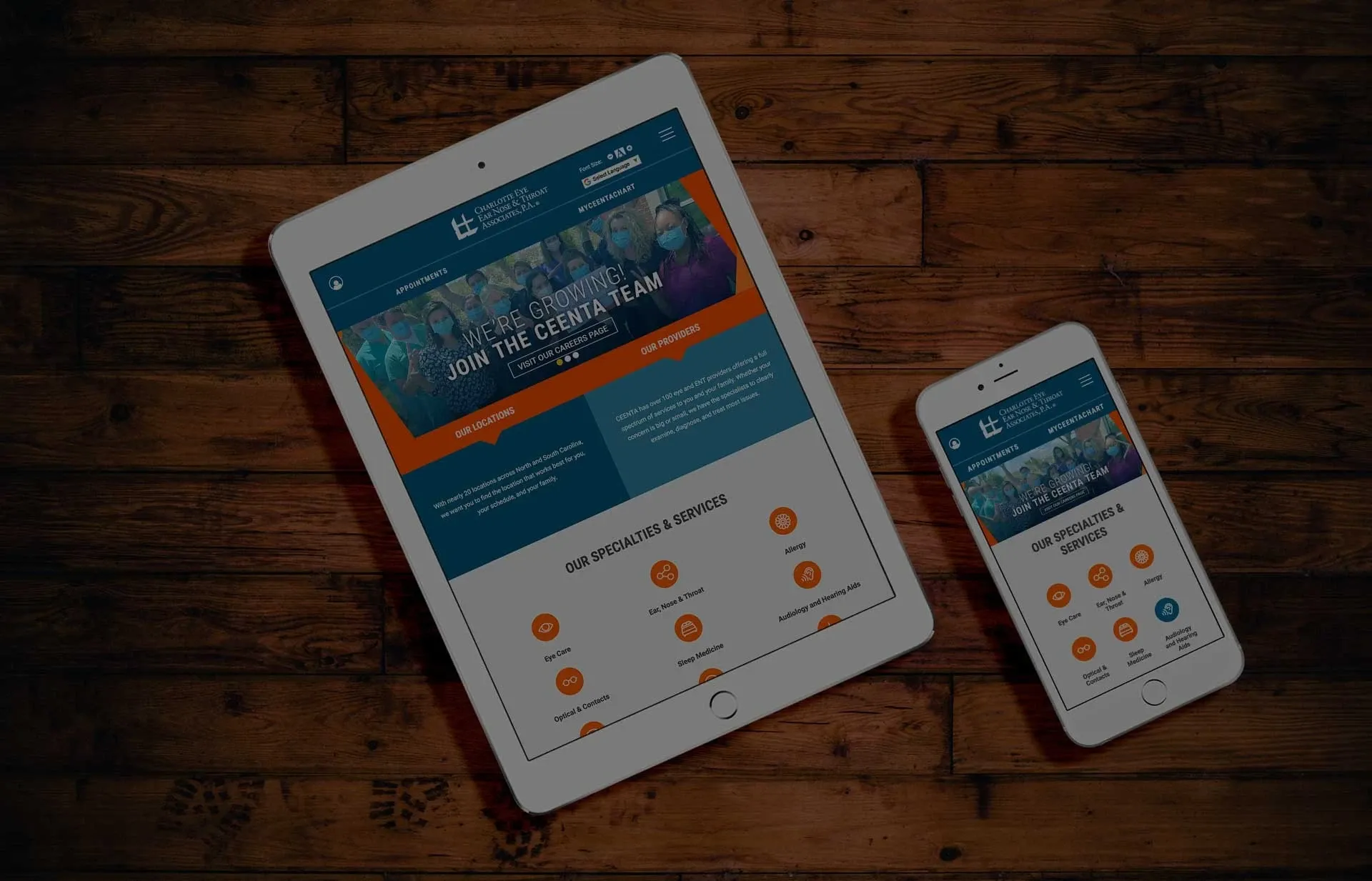Recent years have been tough for the healthcare industry, and in 2025 it doesn't look like thing's are going to get any easier. Rising costs, evolving patient expectations, and economic uncertainty are placing pressure on healthcare organizations to do more with less.
That means healthcare marketers need to be smarter, more strategic, and deeply aligned with operations to make an impact.
Below, we dive into the most important healthcare marketing trends for the year - along with actionable tips to help your organization stay competitive, connect with patients, and drive measurable growth.
1. Next-Gen Patient Journeys Are Non-Negotiable
The patient journey in 2025 isn’t linear—and it’s not what it used to be. Today’s healthcare consumers expect a seamless, personalized, and tech-enabled experience.
To meet these expectations, organizations must invest in marketing technology like customer data platforms (CDPs), call tracking systems, and healthcare CRMs. Tools such as Freshpaint, Liine, CallRail, and Patient Prism help marketers understand how patients engage with their brand—and more importantly, why they don’t convert.
Combining first-party data with third-party data sources like LiveRamp helps build rich, actionable patient personas. From appointment scheduling preferences to communication channels, understanding how your audience interacts is key.
Modern marketers must also ask: are we reaching the right audience? That means ongoing surveying, segmenting, and validating that your marketing is speaking to the real decision-makers in the patient journey.

2. Diversify Patient Acquisition Channels to Avoid Diminishing Returns
Over-reliance on a single marketing channel—like Google Ads—can lead to plateauing results. In 2025, a diversified media mix is critical to both short-term lead gen and long-term brand growth.
Here’s why channel diversity matters:
- Avoid Saturation: Paid search is effective, but results diminish when the audience is tapped out. Expanding into paid social, programmatic, and video can open new patient acquisition pathways.
- Boost Synergy: Cross-channel marketing drives better performance. Display ads can prime users to engage more with search campaigns, creating a multiplier effect.
- Reach the Full Decision-Making Unit (DMU): Healthcare decisions often involve family members. Different audiences respond to different platforms—email for older patients, social ads for adult children.
- Build Brand Trust: High-acuity decisions take time. Consistent visibility across channels builds trust and keeps your organization top-of-mind when it matters.
Diversification isn’t just about chasing impressions—it’s about crafting a patient-centric journey that aligns with how real people make healthcare decisions.
3. Align Marketing and Operations to Improve Patient Engagement
You can’t drive patient volume if the experience is broken. Marketing may get patients in the funnel, but if access is difficult, you’re losing them before they ever walk through your door.
Disengagement is rising. Some reports find that “Doctor Dodgers”—patients who want care but face barriers accessing it—now make up 16% of U.S. adults.
To reduce friction and improve engagement, marketing and operations must work hand-in-hand.
Key questions to ask:
- Is your digital front door mobile-friendly and ADA-compliant?
- Are your call tracking transcripts revealing issues in booking workflows?
- Are wait times acceptable, and are you communicating them clearly?
- Are you re-engaging patients using their preferred communication methods?
Operational alignment ensures marketing efforts actually convert into visits—and long-term patient relationships.

4. Use Capacity Data to Balance Demand and Maximize ROI
Marketing doesn’t exist in a vacuum. If you’re running campaigns without understanding location-specific capacity constraints, you risk two outcomes: overbooking and under-delivering.
Or worse—sending patients to competitors because your locations are full.
Aligning marketing budgets with real-time capacity data helps ensure dollars are spent where they’ll generate actual appointments. We focus on a "capacity for care" strategy with all campaigns that we manage, prioritizing locations with the most availability and shifting budgets in real time based on capacity trends.
The result? Better patient experiences and more total patients treated across your org.
5. Data Democratization Is Driving Smarter Decisions
In 2025, leading healthcare organizations are breaking down data silos and ensuring cross-functional teams—from marketing to the C-suite—are working from a unified source of truth.
True data democratization means:
- Aggregating data from EMRs, marketing platforms, and call centers
- Aligning metrics across marketing, ops, and finance
- Making dashboards accessible to decision-makers at every level
Marketing teams that understand operations, and vice versa, are able to collaborate more effectively—and drive better outcomes for patients and providers alike.
6. AI Is Changing the Game for Healthcare Marketers
Healthcare and life sciences organizations are investing heavily in AI—and with good reason. From predictive analytics to automated transcription, AI is streamlining processes and unlocking insights.
Top AI use cases include:
- Speech-to-text for calls and content
- Data analysis at scale
- SEO and competitive research
- Forecasting and campaign modeling
- Sentiment analysis and user research
- AI-assisted content generation
But remember: AI isn’t a cure-all. PHI requires HIPAA-compliant platforms. AI content must be reviewed by experts. And outward-facing use cases must be approached with care to preserve trust.
7. Healthcare Consumers Are Demanding Authenticity
As AI becomes more prevalent, trust becomes more fragile. Today’s patients want real content, real stories, and real experts.
That’s why authenticity is the most valuable currency in healthcare marketing right now.
Ways to connect authentically:
- Feature content authored by your medical staff
- Highlight unique perspectives, patient stories, or behind-the-scenes insights
- Avoid AI-sounding copy—opt for human-written content with a clear voice
- Build community (e.g. PRM’s Worrthy Warrior platform or CHI’s patient podcast)
Let your brand’s humanity shine through every touchpoint.
8. Measurement Frameworks Are Evolving
HIPAA compliance, platform privacy changes, and the complexity of the modern patient journey make marketing attribution harder than ever.
That’s why healthcare marketers are increasingly turning to Media Mix Modeling (MMM) to understand what’s working.
MMM benefits include:
- HIPAA-safe measurement (no pixels required)
- True revenue correlation across all channels
- Forecasting based on real data, not guesswork
- Cross-channel attribution that reflects real decision paths

9. Marketing Leaders Are Wearing More Hats Than Ever
Modern healthcare marketers must be:
- Data analysts
- Technologists
- Brand strategists
- Patient advocates
- Budget managers
- Compliance experts
Success in 2025 requires versatility, cross-functional collaboration, and the ability to make decisions with limited visibility. The best marketing leaders are those who can adapt quickly, communicate effectively, and make data-driven decisions that move the organization forward.
Final Thoughts
2025 is a year of transformation. As healthcare organizations navigate economic pressure and rising patient expectations, marketing teams must evolve and lead the charge.
By embracing next-gen tools, breaking down internal silos, and staying focused on authentic, patient-centered experiences, healthcare marketers can build brands that grow—and genuinely make a difference.

About the Author
Sean Brady, Director of Marketing
Sean oversees all campaign strategy at E-dreamz. As a paid media expert with nearly 20 years experience conceptualizing and crafting high-performing paid search search campaigns, Sean ensures success for all of our marketing clients. Whether the goal is patient acquisition, brand visibility or awareness, Sean and his team deliver the results our clients expect. Sean knows the Google Ads platform inside-and-out, and is our chief thought leader for recognizing and adapting to industry changes as they relate to healthcare ad management.
« Back to Blog
Ready to Get Started? Contact Us Today to Schedule Your Discovery.

© 2025. All rights reserved. E-dreamz, Inc.

